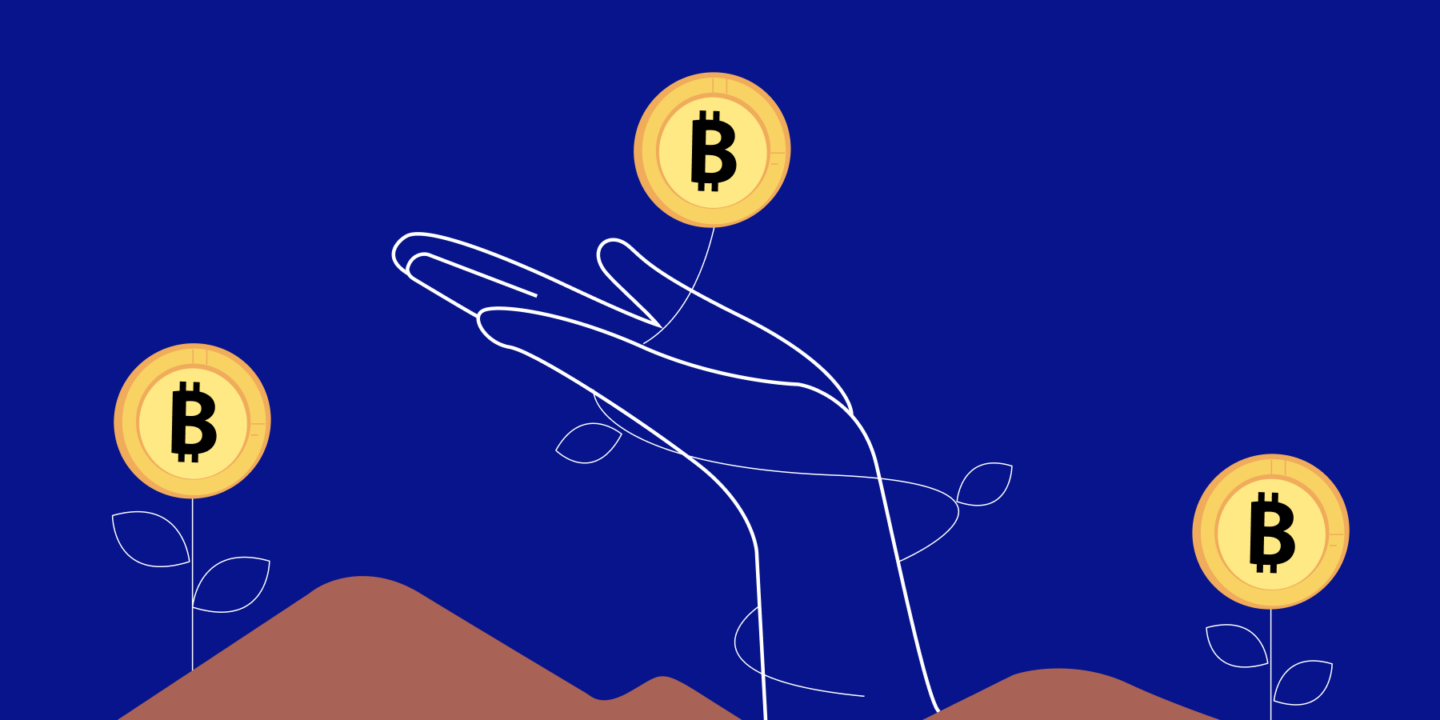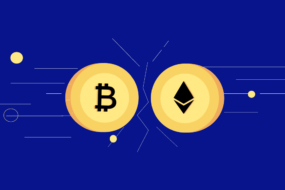
Gone are the days when crypto was confined to a select few smart folks over the internet. While that is great because mass adoption would result in the overall maturity of this space, it also makes it important to explore options like yield farming to make that extra return.
If you are wondering what yield farming is, fear no more! We’ve got you covered. Stay tuned.
But while we’re on the topic of alpha, why don’t you take a look at Coin Sets? After all, investing in indices is proven to be way smarter than individual assets.
What Is Yield Farming in Crypto?
To truly appreciate the simplicity of this concept, let us break it down. Yield is the interest. Yes, the same interest your bank would offer on top of your savings. And farming refers to the various ways deployed to maximize this yield (interest). So yield farming is a set of techniques aimed at boosting your yield.
Yield farming is more relevant in decentralized finance because of the high flexibility it offers over traditional finance. Another aspect differentiating yield farming from conventional interest-making investments is the yield itself. Yes, you could earn a triple-digit yield here as well. But not all that glitters is gold. These massive returns carry the baggage of high risk and volatility. Apart from that, you are often exposed to scammers trying to dupe you off your funds.
How Does Crypto Yield Farming Work?
It would be fun to make a side-by-side comparison with traditional finance.
You would open a bank account. *Yawns*. The entire streak of endless documentation and signatures begins. After some sweet time, the bank confirms that you are free to deposit your money with them. Happily, you abide by some weird laws of minimum balance, minimum first deposit, slab-based privileges, etc. All of this for a measly yield that barely beats inflation.
In a decentralized finance ecosystem, all you need to do is have some crypto handy. Once that is done, you can pick out multiple protocols to lock (stake) your funds and earn a much better yield against it. The entire process takes minutes to execute with absolutely zero documents.
Oh, did I mention that all of this elaborate tango is triggered without a centralized authority controlling it? Thanks to the smart contracts that self-execute when certain conditions are met. These smart contracts are immutable as they are built on blockchain. It is often said that if blockchain were a city, then code (smart contracts) would be the law.
Another relevant question to answer is why these protocols or decentralized applications facilitate these yields. Some of these protocols work the way banks would. They take your money and lend it to someone else (your money here is secure due to collateral deposited by the borrower). Other protocols simply incentivize the participants to set up money pools where traders would come and exchange their assets.
What Are The Different Types of Yield Farming?
There. You have it—the most anticipated section of the article. Let us dive straight into the moolah-making methods via yield farming.
1. Liquidity provision
Ever traded on a centralized exchange? All such exchanges work on an order book mechanism. In other words, all your buy/sell orders are listed on a centralized ledger. If someone comes along to exchange their assets at a price you quote, the trade goes through.
But what happens in a decentralized exchange? There’s no central authority managing a book. Apart from that, you can’t wait forever for someone to exchange their assets with you.
As a result, the industry came up with the concept of liquidity pools. The idea is pretty simple. A few individuals pool their assets in a 1:1 ratio. For example, in a pool that allows users to exchange ETH and USDT, any individual could deposit ETH and USDT in equal amounts to maintain the pool balance and become a liquidity provider.
Now any trader can come and exchange their ETH with USDT or vice versa.
But why would someone provide liquidity to a protocol? Well, that is where the farming begins. You get a share of the fee that the protocol charges. This fee depends on the proportion in which you deposited the funds. So if you deposited $100 in a pool with $1000 worth of funds, you get 10% of the total fee.
You often pay this fee through liquidity provider (LP) tokens. Think of them as the receipt of your deposit.
2. Borrowing and lending
Borrowing and lending are the backbones of every strong economy. In traditional finance, banks carry out this lending activity primarily by using the money deposited by people like you and me. They charge a certain % interest for this from the borrower and give it back to us by keeping a sizeable chunk for themselves.
2.1 Lending
Imagine this in DeFi parlance. You could now directly deposit your cash at a fixed Annual Percentage Yield (APY) and generate a passive source of income. This APY is listed on platforms like AAVE and Compound. Based on the crypto being lent, it can be anything between 1% to 30%. Because our savings account could fetch us ~3.5% and stock markets could do ~12%, anything more than that becomes extremely juicy.
2.2 Borrowing
Imagine that you have a heck of an investment opportunity but need capital to make it big. In a centralized banking system, you can borrow money from the bank. For that, you need collateral and decide to put your house on a mortgage. You could use the value of your house while the house in itself is appreciating (hopefully).
Similarly, in the crypto ecosystem, if you are bullish on the prospects of a crypto and still want some capital for some other purpose, you could use that crypto as collateral and borrow. Later, you could pay the principal and interest and get back your (hopefully) appreciated crypto.
3. Staking
Staking is simply locking up your tokens to earn a yield. You can do this in two different ways.
First, all proof-of-stake blockchains encourage more participants to stake their crypto in return for voting rights (on who gets to validate the next block) and rewards. This ensures that the network is truly decentralized in terms of geography and participants.
Secondly, when you provide liquidity to a decentralized exchange liquidity pool, you often get rewarded in LP tokens. These LP tokens can also be staked to earn a yield on top of it. Protocols like Uniswap and Sushiswap have enabled this.
How to Calculate Returns in Yield Farming?
Ah, the returns. It is time to measure how much you could possibly make with all these endeavors. Returns are represented in an annualized format. In other words, returns are presented for a duration of entire 12 months. Terms used to denote this are APY or annual percentage yield and APR or annual percentage rate. APY takes compounding into effect (wherein you invest your gains back into the protocol), and APR does not.
While investing in a protocol offering APY in triple digits may seem lucrative, one must note that these interests vary almost daily. By design, the early adopters get high returns, and as these returns attract more people, returns diminish.
Due to the dynamic nature of the yield farming protocols, it isn’t smart to look at APYs to calculate returns. ROI calculations often make more sense when done on a daily/weekly basis.
Few Examples of Yield-Farming Protocols
Now that you know how these protocols operate, it is time to dive into some examples.
1. Uniswap
Uniswap is the world’s most famous decentralized exchange. In fact, it is the fifth largest protocol by total value locked ($5B) in it.
Traders across the globe flock in to swap their assets using the liquidity pools created by individuals like us. Liquidity providers are incentivized in the form of UNI tokens for providing liquidity. They can also stake these UNI tokens in the protocol to earn additional yield.
2. Aave
Aave is a borrowing and lending platform that allows lenders to park their crypto to earn a yield. It has a TVL or total value locked of $6.5B.
The way it works is that AAVE has fixed rates for borrowing and lending. If you wish to borrow crypto worth $100, you must deposit collateral worth $120 or more. This is known as over-collateralization. If the price of your collateral reaches near the borrowed amount, it is sold off, and the position is automatically closed. This way, lenders’ money is always safe.
Another very common question is, “Why should someone borrow crypto against crypto?” Turns out that you might be bullish on the prospects of a token and don’t want to sell it. Instead, you can simply keep that token as collateral and borrow a percentage of that amount to use elsewhere.
Aave also has its native token called AAVE. It can be used to vote on governance proposals made by the community.
3. SushiSwap
SushiSwap is a decentralized cryptocurrency exchange (DEX) built on the Ethereum blockchain, using an automated market maker (AMM) model for efficient trading. As a fork of Uniswap, SushiSwap offers additional features and incentives, such as its native governance token, SUSHI. Users can provide liquidity to various token pairs, earning fees, and liquidity provider (LP) tokens in return.
SushiSwap also has unique programs like the “Onsen,” which offers boosted rewards for specific token pairs. By participating in SushiSwap, users can gain exposure to various DeFi opportunities while contributing to the platform’s growth.
4. Compound
Compound is a decentralized finance (DeFi) protocol built on the Ethereum blockchain, designed to facilitate lending and borrowing of various cryptocurrencies. As a prominent yield farming platform, Compound enables users to supply assets to earn interest, while borrowers can access loans by posting collateral. By providing liquidity, users can earn interest and COMP, the native governance token of Compound.
The interest rates are algorithmically determined based on supply and demand, ensuring market-driven returns. Additionally, users who hold COMP tokens can participate in the platform’s governance, proposing and voting on changes to the protocol. Compound’s user-friendly and transparent approach has made it a popular choice for both experienced and new DeFi participants seeking passive income opportunities.
5. Yearn.Finance
Yearn.Finance is a decentralized finance (DeFi) platform that operates as a yield aggregator, optimizing users’ funds allocation across various DeFi protocols to achieve the highest possible returns. Built on the Ethereum blockchain, Yearn.Finance automatically moves deposited assets into different liquidity pools and lending platforms, capitalizing on the best yield opportunities. Users can deposit their assets into Yearn’s vaults, which manage the yield farming strategies on their behalf. In return, users receive yTokens representing their share in the vault.
Yearn.Finance’s native governance token, YFI, is awarded to users as an incentive for participating in the platform. YFI holders can also engage in the platform’s governance, voting on proposals and influencing the protocol’s development, making Yearn.Finance a community-driven and adaptive DeFi solution for yield optimization.
Is Crypto Yield Farming Profitable in 2023?
Yield farming is a very dynamic space. Since the yields tend to change in a very short duration, it often requires vigilance and time for farmers to cull out the best possible strategies. However, for someone who can manage it, yield farming is highly profitable even in 2023.
That said, yield farming is significantly risky, and the farmers run the risk of impermanent loss (wherein holding assets would yield higher returns compared to staking them), rug pulls, etc.
Pros and Cons (Risks) Involved in Crypto Yield Farming
Crypto yield farming is still evolving and highly speculative space. Therefore, it is imperative to understand its pros and cons.
Pros of crypto yield farming
Because of its insane APYs, yield farming is an extremely lucrative business. So let us start with that and take you through other pros of yield farming.
1. High APYs
Some yield farms offer up to 100% APYs. Overall, it is not hard to find farms that offer a yield to the tune of 30%. Since no other investment instruments offer this yield, it often draws the attention of a lot of people. You can find out the daily yields of key protocols from here.
2. Decentralized
To top it all, the entire show is run by smart contracts. There is no element of subjectivity involved. Apart from that, there are no barriers to entry. Anyone with an internet connection can join the party. There is definitely a learning curve involved, but that is pretty much the requirement.
3. Borderless
DeFi yield farming breaks away from the barriers laid down by geographies. In fact, the origin of a protocol could not be less of a concern when it comes to investing.
Cons (Risks) of crypto yield farming
And then there were the downsides. You might lose all your money if you plan to jump in without understanding these risks.
1. Regulatory risks
None of the world governments has managed to regulate the decentralized finance space so far. Therefore, the onus of declaring the profits/losses lie in the hands of the taxpayer. In case of an inquiry, it might be difficult to reveal your past transactions and explain them to the tax department.
2. Impermanent loss
Due to price fluctuations between the assets in a liquidity pool, the investors often run a risk of impermanent loss. It is called impermanent because you do not realize this loss until you withdraw your liquidity. This occurs when the value of your deposited assets changes from when you deposited them. When you deposit in liquidity pools, you contribute a share in the total pool, say 20%. If the value of cryptocurrencies in that pool drops because of market fluctuations, you are still entitled to only 20% of the share, which could be of less value than when you deposited.
In such a case, simply holding the asset gives a better return (or reduces losses) in case of a fluctuation.
3. Scams and frauds
For some reason, fraudsters tend to stay a step ahead of retail investors. DeFi yield farming is home to some of the biggest scams in this space. If you think that we are spreading paranoia, here’s a site that tracks frauds and scams in this domain.
What Next? How Do I Get Started With Crypto Yield Farming?
Finally, the moment has come. If you are all set and want to jump right into the world of juicy APYs. This section will help you prepare for that. Let’s go.
Step 1: Prepare and research
Did you assume that you would simply pick the highest yield-generating platform and move your crypto? Well, that is not how we do things here. You might want to understand the history of the protocol, team, audit reports, and reviews.
Moreover, you should also explore tokenomics. Otherwise, you might end up earning a high yield in the form of a worthless token.
Step 2: Setup your wallet
Did we mention that you cannot leverage the true potential of yield farming through centralized exchanges? You need to set up a decentralized wallet like Metamask/Trust wallet and move your crypto there to transact.
Step 3: Stake and make
The next step involves staking your crypto in the right proportion while exercising proper due diligence. Also, do not forget to collect your rewards. Many platforms keep accumulating your rewards and require you to collect them manually.
FAQs
1. Is yield farming the same as liquidity farming?
Yield farming is a set of techniques to maximize the yield (return) on a given crypto. It can also include liquidity farming as one of the techniques. On the other side, liquidity farming only focuses on maximizing yield by providing liquidity to a liquidity pool of a DEX.
2. What Is APY in yield farming?
APY stands for annual percentage yield. It is the annual interest you would make on an investment after considering the compounding. This differs from APR or annual percentage return, which does not account for compounding.
3. What Is DAI in yield farming?
DAI is a stablecoin that is often put to use while yield farming. One can borrow DAI by depositing collateral in the form of different cryptos. The Maker DAO protocol enables this. You can deposit a specific crypto and get DAI in return.
4. Where can I do yield farming?
Various platforms allow you to lend/stake your tokens to earn yield. Some examples are Uniswap, Sushiswap, MakerDAO, AAVE, and Curve Finance.




